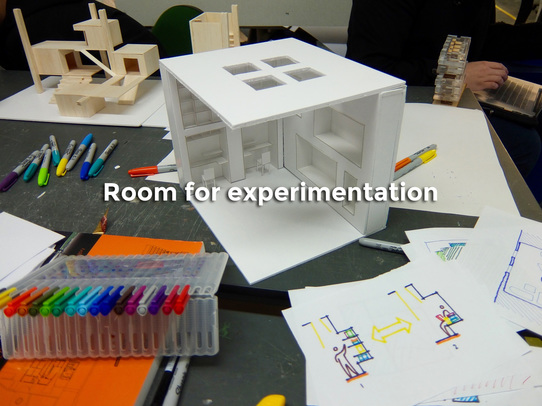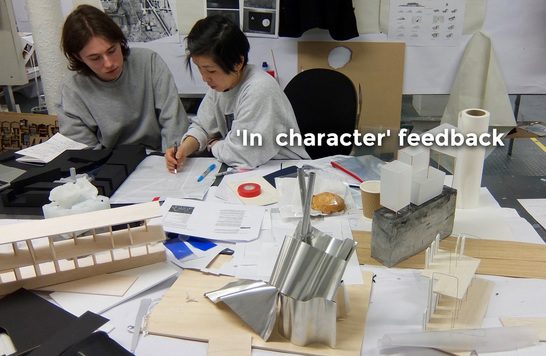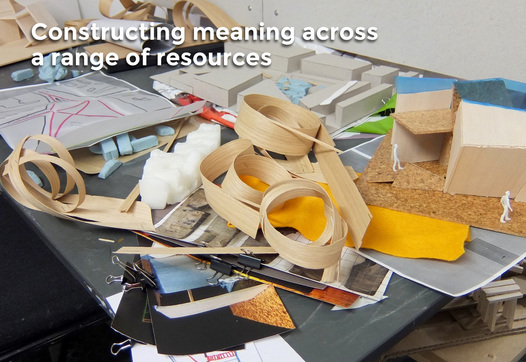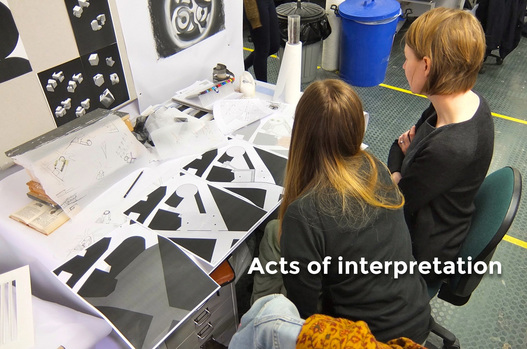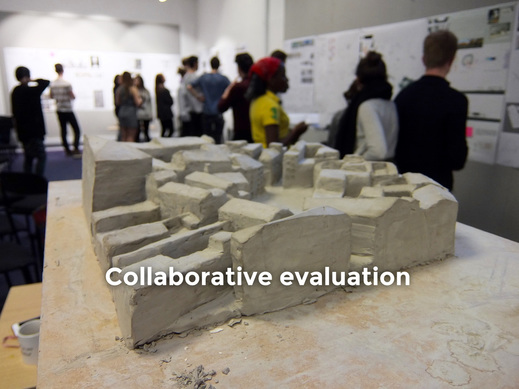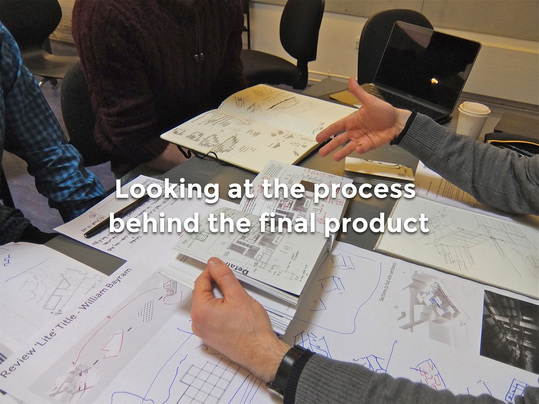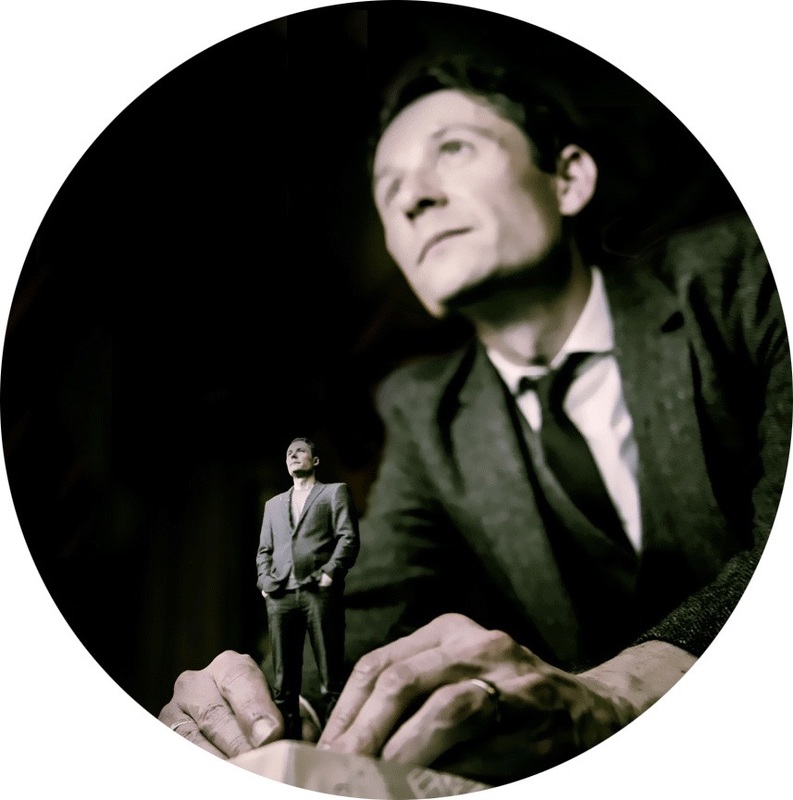|
Between January and March this year I spent time in Edinburgh University’s Architecture School, observing a second year Architectural Design course. Over ten weeks I observed students and tutors involved in an assignment concerned with the design of a library. My interest was in learning how meaning was constructed and conveyed within a creative degree programme. In particular I wanted to gain insights into the ways that tutors and students approached an assessment exercise where work would be conveyed across a range of resources. Now that my ethnographic fieldwork has drawn to a close I have been invited to return to the Architecture School to share my findings. This has prompted me to spend some time thinking about what my experiences in the Architecture studio have to say about the relationship between multimodality and assessment and feedback within a creative setting. Looking back over my field notes and gathered photographs I have identified six themes which seem to stand out as being suggestive of the character of assessment and feedback in the Architecture Studio, as follows: A recurring feature of the Architectural Design course saw students being encouraged to explore relevant themes through drawings and models, which they would then bring to class each week. These artefacts would form the basis of tutorial discussion, where tutors and students would reflect upon the ideas being conveyed through the work. The environment was supportive and students were encouraged to use the preparation of these models and drawings as a way of experimenting conceptually with the design of their library building. At the same time, part of this experimentation pushed students to develop and refine their practical skills: my field notes describe how Maria had been investigating what happened to resin at high temperatures (it burned) and that Ellen had been exploring shape through the use of candle wax. Yet even at this formative stage there was encouragement from tutors towards nicely rendered sketches, polished architectural plans and accurate models: conceptual work and quality of finish. In this setting ‘risk free experimentation' did not mean ‘carefree’: students were encouraged to be ambitious and to bring new ideas and approaches to class, but that their creative energy should be directed towards the the acquisition of understanding and technique which would support their final coursework. This included thinking about the combination of resources that would be most suited to the ideas they wished to convey. This encouragement to be experimental was supported by feedback from tutors that was supportive and made use of dialogue that was in tune with the wider meaning-making rituals of Architecture. By 'In character' feedback I am suggesting that tutors engaged in a dialogue which displayed a symmetry with the approaches and artefacts that were the subject of discussion in class. For instance, when Jack (tutor) wanted to suggest an alternative way for visitors to circulate through Han's proposed library, he sketched directly onto his architectural drawings. Similarly, when Akiko (tutor) wanted Karen to think more deeply about the use of light in her proposed library, she took a pair of scissors and cut through her model to create a cross section that we could all peer into. In each case (and many other similar examples) this was accompanied by an oral commentary. Ideas were constructed and deconstructed using the same techniques for creating and conveying meaning - sketching, modelling, speaking - that students had used to develop their work and will be expected to use in Architectural practice. In the Architecture studio feedback is multimodal as well as in concert with the subject matter and the audience’s needs. From my fieldnotes, meaning was constructed and conveyed through: resin, acrylic, balsa wood, wire, wax, clay, plaster, card, wood, metal. Ink, paint, graphite. Ribbon, wool, netting. Light bulbs and scale plastic figurines. Hand-drawn sketches and computer-aided designwork. Photographs and architectural plans. Gesture, posture, eye contact. Voice. Space and silence. Printed type. Not all at the same time, yet always simultaneously drawing on a wide range of different resources (and more often than not, with words-on-page limited to playing a functional, descriptive role: ‘Scale 1:50’, ‘Elevation’). In the architecture studio meaning is constructed and conveyed in an array of richly multimodal ways, which in turn affects how tutors approach the task of marking assignments. Compared to 'essayistic’ assessment, the rich multimodality of the Architecture portfolio places a greater emphasis on acts of interpretation, rather than more straightforward measurements of quality. Although the marking of a conventional written essay requires the tutor to interpret what is being verbally conveyed, the existence of longstanding conventions around linearity, voice, argument and evidence lend a structure for evaluating the quality of ideas. The portfolio however draws on a combination of resources which speak with a less well articulated language (or indeed, range of languages). And whereas the essay has a pre-fixed format, the tutor evaluating a portfolio is challenged to interpret meaning from a collage of different materials, as the student composer has more freedom to bring her individual interests and talents to the fore. The tutor has to take account of how the different resources come together in concert or collision to create meaning. With a greater attention to freedom and interpretation, it is easy to see why tutors might not wish to work alone when it comes to evaluating and grading coursework... During the Review Lite exercise, students were divided into groups of three and then asked to circulate around the studio, reflecting on the designs being put forward by their peers. They jointly examined and discussed the ideas presented across the sketches and plans on display, before agreeing what they liked about the work and where they felt there was room for improvement. When it comes to assessing the final portfolios, tutors will work in pairs, moving around the studio and discussing how the presented artefacts sit in relation to the brief. In each of these examples the quality of ideas and work on display is evaluated through collaborative discussion between students or tutors. Through conversation and negotiation tutors arrive at an agreed position on how the collected models, sketchbooks and architectural drawings combine to address the assignment brief, followed by the grade that the work merits. When there is a high level of freedom in the representational form of the portfolio (for instance in the selection and use of materials and how they are configured in relation to each other) there would seem to be value in tutors working collaboratively to interpret and evaluate this highly multimodal work. As well as providing room for experimentation and opportunities for dialogue, the high level of student-tutor interaction during the Architectural Design course also seems to plays an important role when it comes to grading the student's overall work. Whereas in many subject areas, and particularly those which heavily privilege verbal communication, marking looks at the submitted work in a form of isolation or separation, a different approach exists in Architecture. In order to account for the learning that has taken place it is necessary to consider how students have approached the preparation of their work, the decisions they have taken and the paths they have followed. The normal university conventions surrounding anonymous marking are waived as tutors necessarily take account of the process as well as the final portfolio that is submitted for assessment. As one tutor described to me, the sketchbook can often be more revealing of the work undertaken and progress made by the student, than the curated final portfolio. If architectural drawings offer an incomplete picture of the learning that has taken place, the time spent together in class affords the opportunity to reflect on process as well as the final product. If we accept that meaning is socially constructed and shaped by cultural circumstances and personal histories, it would seem to make sense for tutors look to evaluate the quality of the work within, as opposed to isolated from, that situation in which it was produced. The six themes that I have described here represent an early attempt on my part to think about the relationship between multimodality and assessment & feedback within the Architecture Studio. Looking to the future I think it would be helpful to investigate whether the same approaches are a feature of other creative degree programmes. Before I do that however I will be sharing these findings when I return to the Architecture School next week. It will be interesting to see whether the Architectural Design tutors recognise the picture I have sketched of the meaning-making rituals that take place in their studio. With thanks to Douglas Cruikshank and the tutors and students within the Edinburgh School of Architecture and Landscape Architecture. Photographs were taken with the consent of the featured students and tutors. Pseudonyms have been used in the place of student names.
13 Comments
14/6/2021 12:35:56
Great article! Thank you for sharing this informative post, and looking forward to the latest one.
Reply
28/7/2021 14:42:38
What an exquisite article! Your post is very helpful right now. Thank you for sharing this informative one.
Reply
15/10/2021 15:05:23
Very much appreciated. Thank you for this excellent article. Keep posting!
Reply
11/11/2021 08:58:07
What an exquisite article! Your post is very helpful right now. Thank you for sharing this informative one.
Reply
17/11/2022 13:26:14
Architectural Design Company professional Phòng Khách Đẹp https://phongkhachdep.org/kien-truc with you on ideas to create a beautiful, comfortable and convenient living space for your family. We accept architectural design Villa, Resrot, Hotel, Restaurant, Apartment…
Reply
21/6/2024 19:26:04
Deep Conditioning Mask Treatment to manage damaged hair. A perfect balance of all natural extracts that together improve hair's texture, softness.
Reply
25/7/2024 02:16:32
Thanks for sharing this useful information! Hope that you will continue with the kind of stuff you are doing.
Reply
Leave a Reply. |
Search categories
All
I am a Lecturer in Digital Education (Education Futures), within the Centre for Research in Digital Education at The University of Edinburgh.
@james858499 [email protected] |
